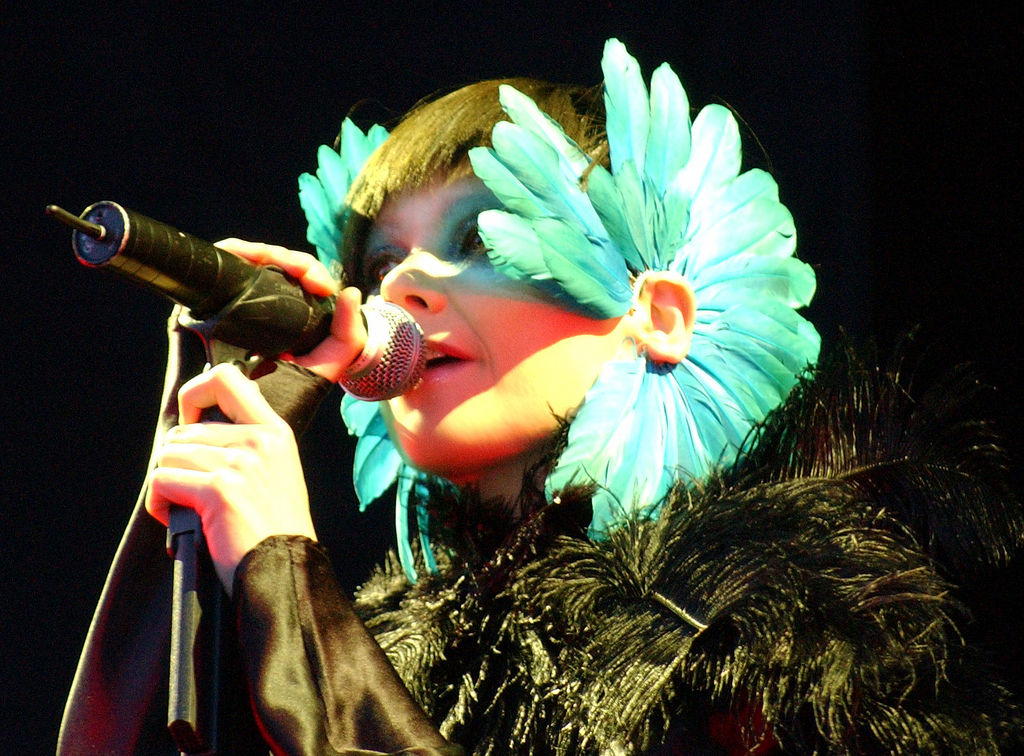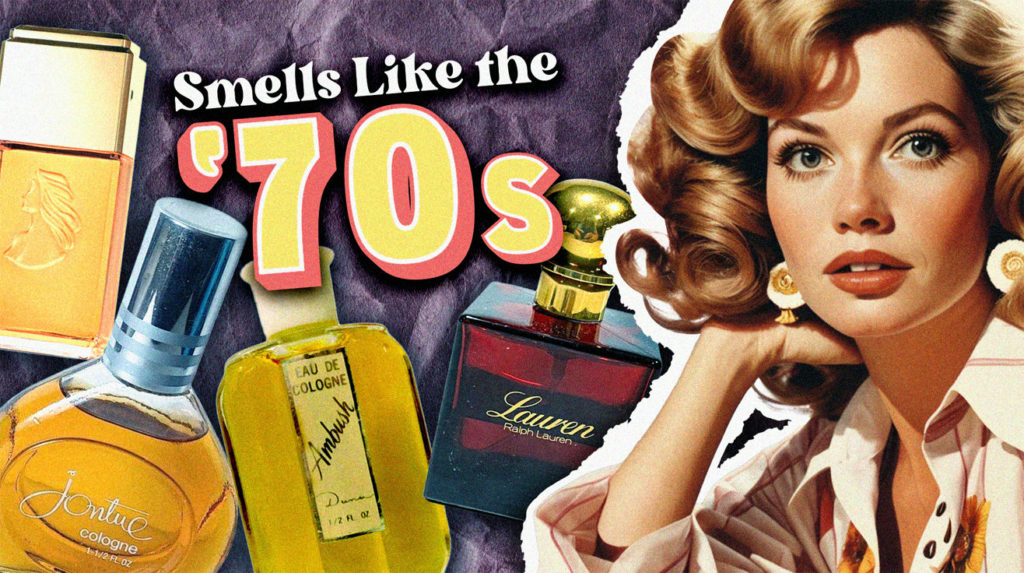
The 1970s wasn’t just about bell-bottoms and disco balls—it transformed how we smelled. These bottled expressions captured everything from women’s liberation to cosmic consciousness, telling stories through notes rather than words. From bold declarations to whispered secrets, each creation reflected the era’s cultural shifts.
Social movements sparked olfactory revolutions while traditional houses scrambled to keep pace. Perfumers bottled personalities, ideologies, and aspirations during this defining decade. Every spritz revealed something about its wearer—carefree, daring, sophisticated or rebellious. Ready for a nose-trip to the past? (No DeLorean required.)
26. Charlie by Revlon (1973)

Revlon’s Charlie strode confidently onto the scene in 1973, selling attitude as much as aroma. This revolutionary creation arrived just as women traded housedresses for power suits, with groundbreaking ads featuring models in pants walking purposefully through urban landscapes. Its fresh floral composition mirrored a changing society—approachable yet assertive, feminine yet independent.
Charlie brilliantly democratized luxury, making sophisticated compositions available at accessible prices. The formula perfectly captured the era’s spirit without requiring a trust fund to purchase. This wasn’t maternal territory—this was for women forging new paths professionally and personally. Its phenomenal sales numbers testified to perfect timing and cultural resonance. Charlie didn’t just accompany the women’s movement; it bottled its essence, making it one of the decade’s most significant olfactory statements.
25. Shalimar by Guerlain (1970s Revival)

Though created in 1925, Shalimar experienced a massive renaissance during the 1970s when the cultural fascination with all things exotic aligned perfectly with this composition’s DNA. Jacques Guerlain’s masterpiece pioneered the sensual oriental category with its intoxicating blend of vanilla, bergamot, and iris. The distinctive bottle alone—with its fan-shaped stopper inspired by Mughal fountains—became instantly recognizable.
This creation wasn’t just wearing a scent; it was creating an entire mood. Named after the gardens where Emperor Shah Jahan mourned his beloved wife (before building her the Taj Mahal), Shalimar came with built-in romance. Its passionate, long-lasting presence made it perfect for the sexually liberated 70s, and unlike some fads, this one was built to last. The composition functioned almost like a character in a film, enhancing every moment with its rich, complex presence.
24. Tigress by Faberge (1971)

Faberge unleashed Tigress in 1971, rejecting subtlety in favor of pure audacity. This bold creation combined exotic spices and vibrant undertones into something that commanded attention instantly. Its intensely animalistic character roared with confidence—perfect for women embracing newfound power during a decade of transformation. The composition felt dangerous and thrilling simultaneously, delivering warm spicy notes that lingered memorably.
Tigress accompanied night prowls through exclusive clubs and made unforgettable impressions at significant gatherings. Unlike today’s often cautious compositions, it polarized opinions unapologetically. Women who wore Tigress signaled their refusal to fade into backgrounds or minimize their presence. The formula celebrated boldness during an era when women increasingly claimed space professionally and socially. Its commercial success proved many welcomed the opportunity to embrace their wilder, more assertive sides.
23. L’Air du Temps by Nina Ricci (1978)
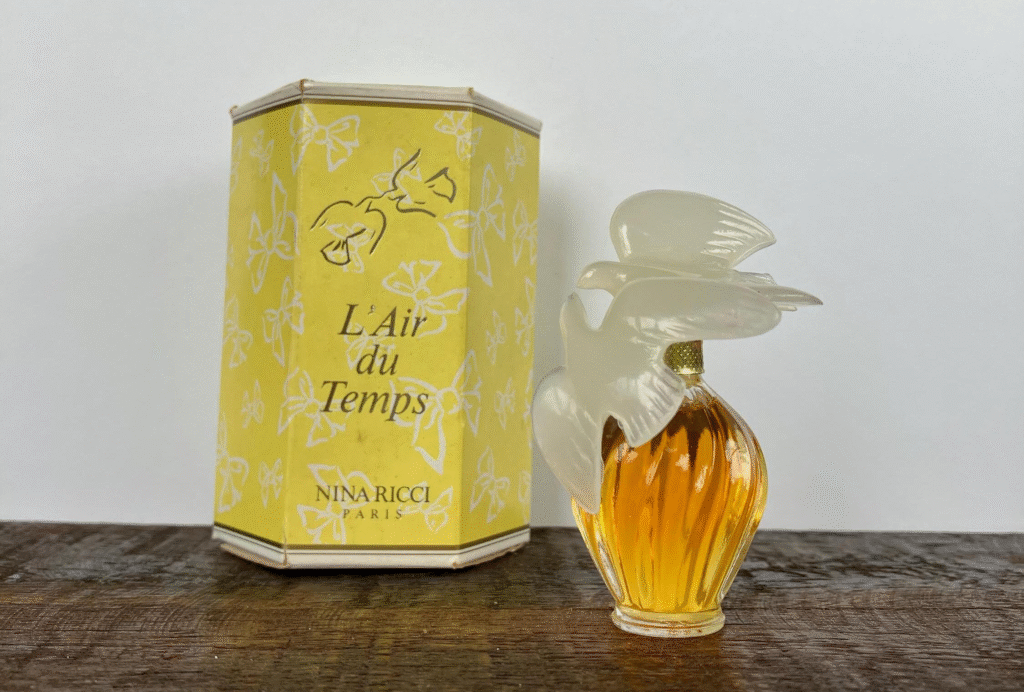
First created in 1948 but enjoying renewed popularity in the late 70s, L’Air du Temps transformed into a legacy passed between mothers and daughters. The composition’s most distinctive feature wasn’t just its delicate floral-spicy composition, but its unforgettable bottle adorned with intertwined dove sculptures—a post-war symbol of peace and love that resonated perfectly with the idealistic spirit of the 70s.
Nina Ricci’s creation became something more than just a scent. The formula balanced carnation, gardenia, rose, and jasmine in a composition that felt both sophisticated and approachable. While newer perfumes came and went like fashion fads, L’Air du Temps achieved that rare feat of remaining relevant across decades. Users frequently mention that a single whiff can transport them instantly to cherished memories of special occasions and significant life moments.
22. Fracas by Robert Piguet (1979 Revival)
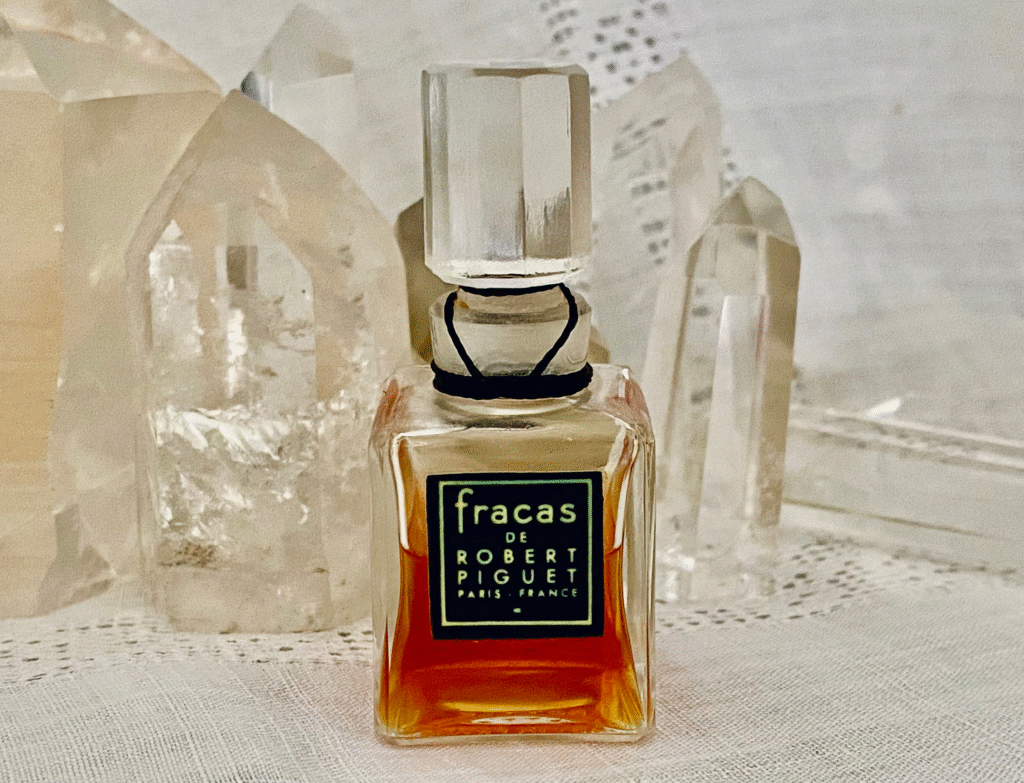
When Robert Piguet’s Fracas made its comeback in 1979, it arrived with dramatic impact. First created in 1948 by legendary perfumer Germaine Cellier, this composition didn’t just feature tuberose—it practically worshipped it, accompanied by orange blossom, jasmine, gardenia, and sandalwood to create the most unapologetically seductive white floral of all time. One spray was enough to turn heads across crowded rooms, making it the olfactory equivalent of pure feminine confidence.
Fracas wasn’t for wallflowers or those seeking subtle experiences. Its lush, intoxicating aura demanded attention with an intensity that makes today’s office-friendly formulas seem practically invisible by comparison. The composition acquired a cult following among celebrities, artists, and anyone who understood that some personalities aren’t meant to be diluted. Now frequently cited as one of the most important tuberose scents ever created, Fracas remains a benchmark against which all dramatic florals are measured.
21. Jean Nate (1970)
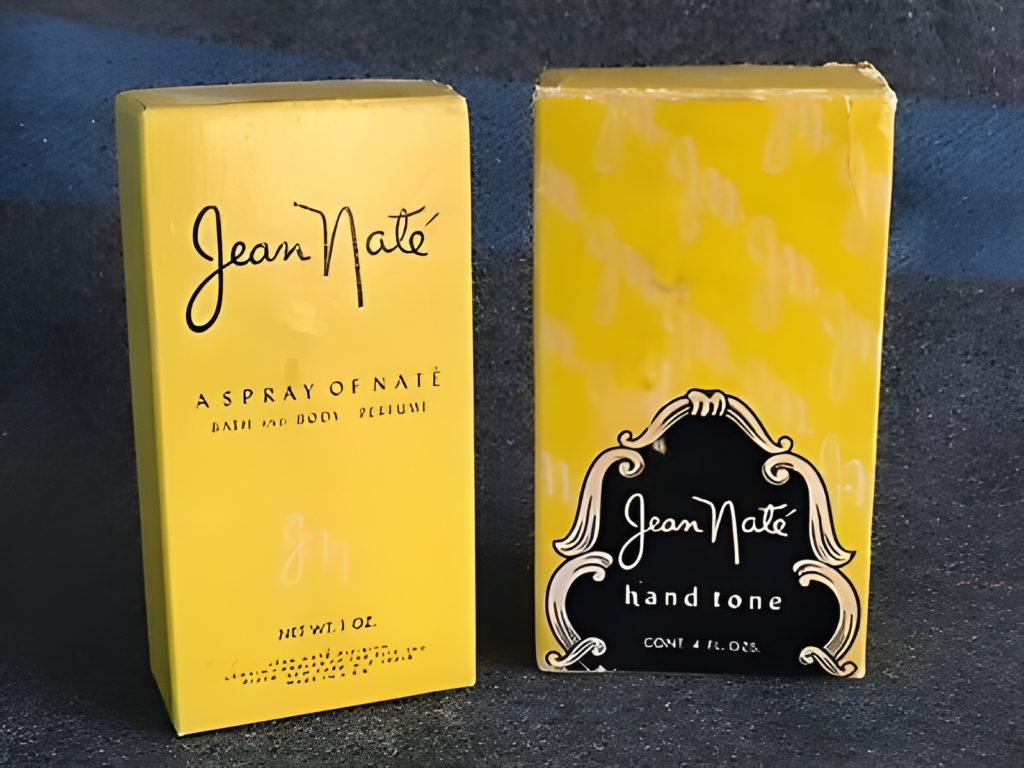
Jean Nate had been around since the 1930s, but the 1970s saw this citrusy splash become as much a bathroom staple as hairspray. This wasn’t a perfume in the traditional sense—it was a refreshing after-bath splash that women applied with abandon, particularly during hot summer months. Its bright lemon notes and clean character made it the olfactory equivalent of pure invigorating freshness.
The bright yellow packaging with bold black lettering perfectly matched the energizing content inside. Jean Nate’s popularity stemmed partly from its versatility and partly from its affordable price point—it was something you could splash on liberally without budget guilt. The composition became so ubiquitous in American households that its distinctive aroma triggers instant nostalgia for many. People often mention that catching a whiff immediately transports them back to childhood memories of watching mothers prepare for special occasions.
20. Anais Anais by Cacharel (1978)
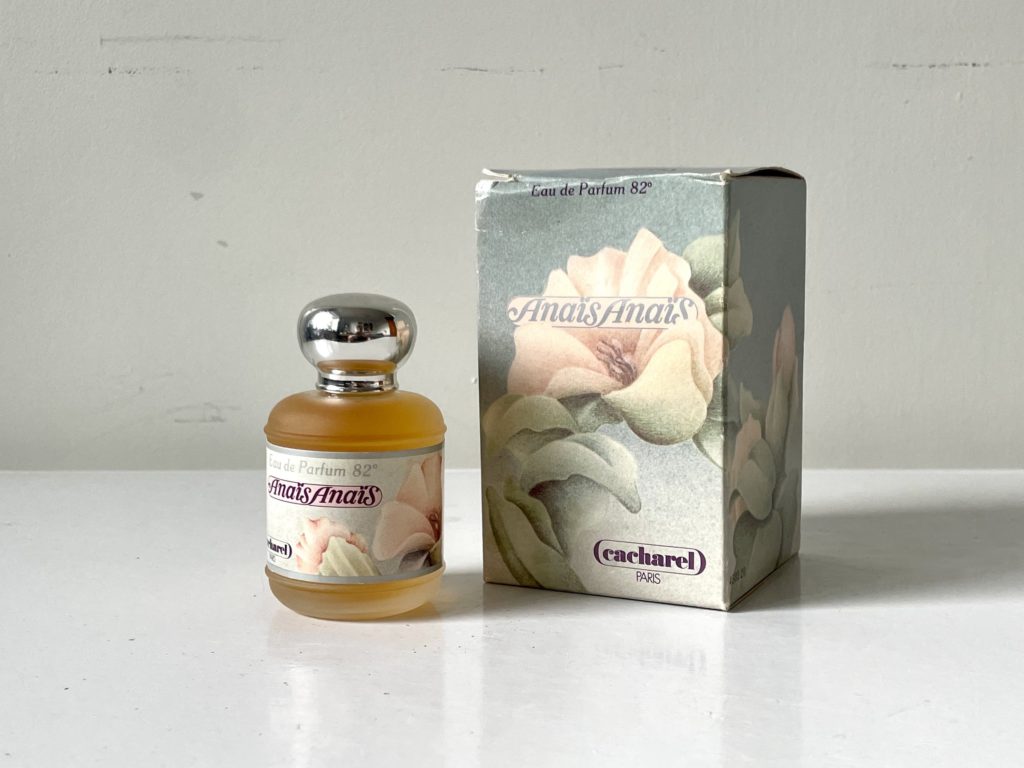
Cacharel’s Anais Anais captivated an entire generation after its 1978 debut, becoming the composition that introduced countless young women to sophisticated aromas. This romantic bouquet of white flowers—lily, hyacinth, rose—struck perfect balance between youthful innocence and blossoming maturity. Its distinctive white bottle adorned with floral decorations materialized on vanities worldwide, immediately recognizable as the signature coming-of-age gift.
While other decade-defining compositions proclaimed independence through boldness, Anais Anais carved a different path. It whispered rather than shouted, celebrating femininity with unabashed prettiness during a time of rapid social transformation. The composition floated beautifully between girlhood and womanhood, accompanying first dates, graduations, and those tentative steps into adulthood. Years later, the distinctive aroma still triggers powerful memories for women who reached adulthood during its widespread cultural dominance.
19. My Sin by Lanvin (1972)
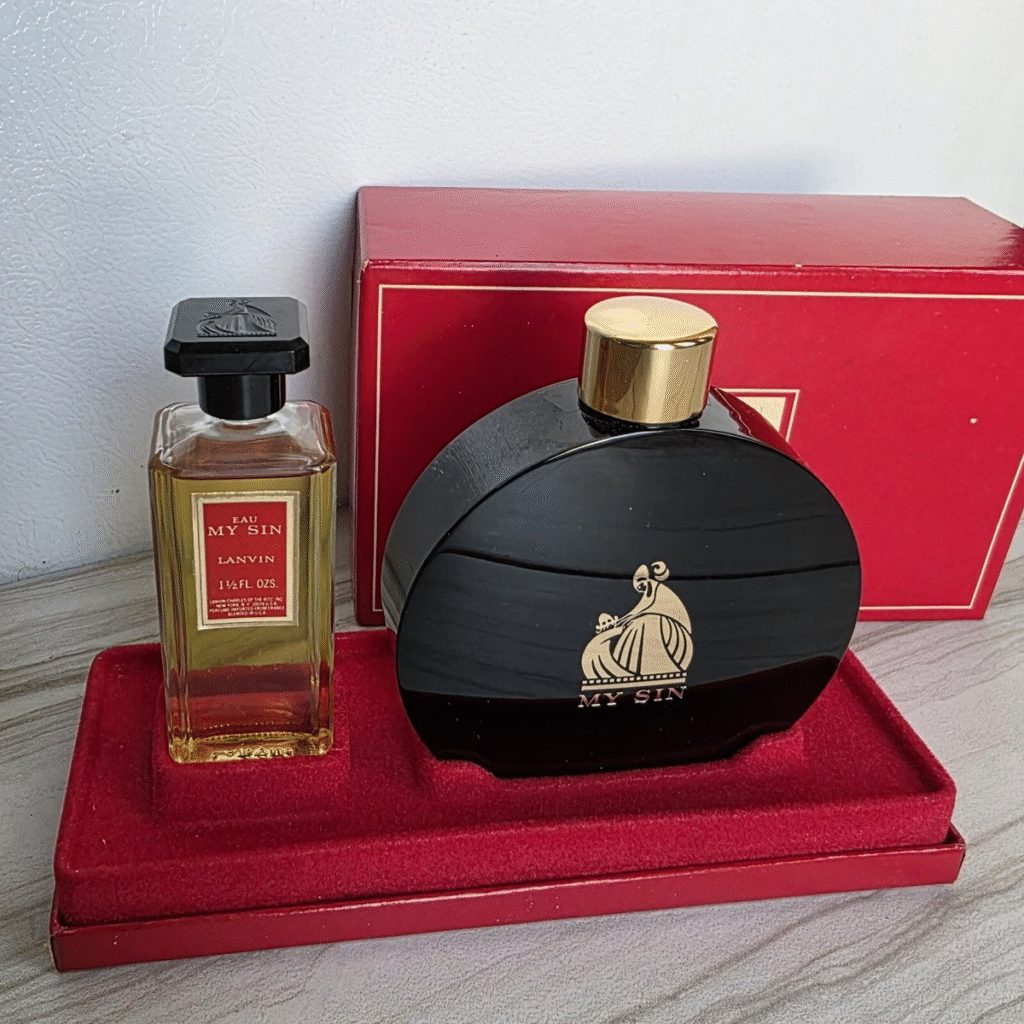
Lanvin reintroduced My Sin in 1972 with a name provocative enough to raise eyebrows at Sunday social gatherings. Originally created in the 1920s, this daring composition resurfaced during a decade of boundary-pushing and social transformation. The jasmine and sandalwood combined with deep floral notes created something mysterious and alluring, whispering secrets to everyone who detected its trail.
Women who challenged expectations gravitated toward this bold declaration. The composition dared to be complex when simplicity dominated many counters. My Sin attracted devotees who appreciated its depth and refused to apologize for embracing their desires. Its success during the liberation movement wasn’t coincidental—the very act of wearing something named “My Sin” functioned as a small social rebellion against outdated propriety, rejecting shame while embracing pleasure and personal choice.
18. Chanel No. 5 (1970s Revival)
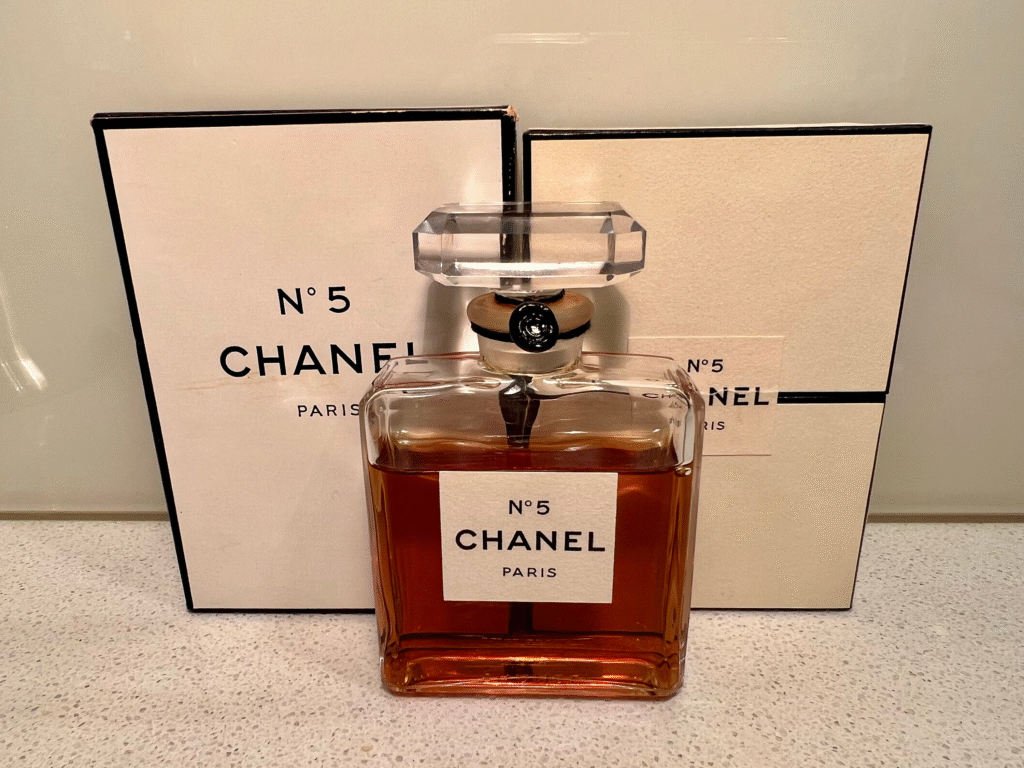
Though created in 1921, Chanel No. 5 experienced a significant revival during the 1970s that cemented its status as the world’s most famous perfume. This legendary aldehyde-floral creation saw renewed popularity when a new generation discovered its timeless appeal. The sparkling, luminous composition remained as elegant and refined as ever—an enduring classic formula that somehow managed to feel fresh with each application.
The iconic minimalist bottle—essentially unchanged since its debut—stood in striking contrast to the more elaborate packaging of many 70s creations. Chanel No. 5 offered something that transcended trends, an olfactory equivalent to the little black dress. Its enduring presence through changing fashion cycles proved that true classics don’t need to reinvent themselves. During the 1970s, it remained the world’s top-selling perfume, defying the decade’s gravitation toward earthier and spicier compositions.
17. Chloe by Lagerfeld (1978)
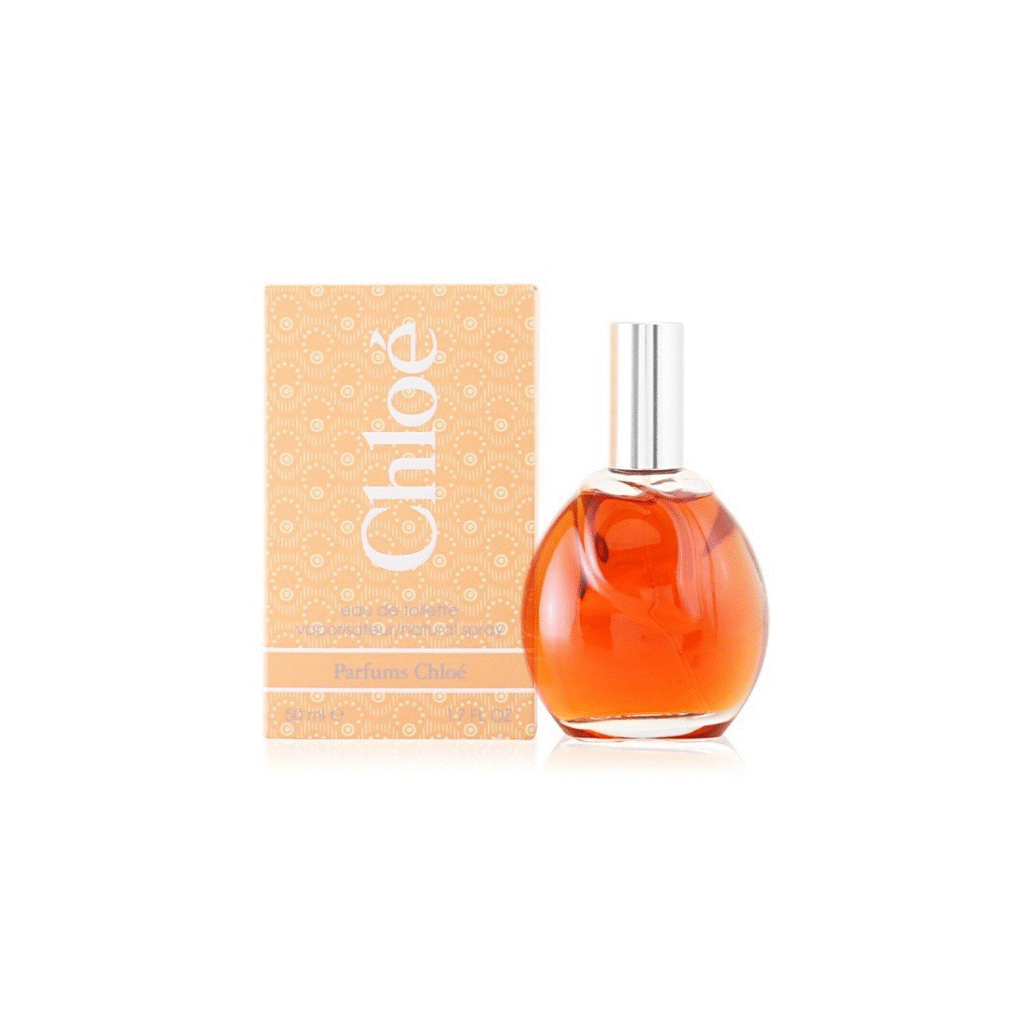
Launched in 1978, Chloe whispered while other creations shouted, proving quiet confidence attracts attention in noisy rooms. Karl Lagerfeld’s elegant composition stood out precisely by not demanding notice, offering gentle floral notes that evoked spring gardens in full bloom. Its delicate charm provided sweet refuge from an era dominated by bold statements and provocative messaging.
Perfume collectors now hunt vintage bottles with extraordinary fervor. The composition delivered refreshing subtlety during a decade of olfactory maximalism. Wearers praised its ability to capture youthful innocence without sacrificing sophistication. For many women, Chloe became their signature—instantly recognizable yet never imposing. Its enduring appeal demonstrates how restrained beauty often outlasts flashier contemporaries, selling over one million bottles in its first year alone.
16. Halston (1979)

When fashion designer Halston launched his eponymous creation in 1979, it arrived in a sleek teardrop bottle designed by jewelry queen Elsa Peretti. This composition burst onto the scene perfectly capturing the glamorous, hedonistic spirit of Studio 54 in its final glory days. The opulent floral blend with vetiver, sandalwood, and oakmoss created something undeniably luxurious yet modern, becoming an instant commercial success.
Halston embodied American luxury with a refreshingly unstuffy attitude. Its sophisticated character appealed to the career woman navigating boardrooms by day and dance floors by night. The sleek, sculptural bottle became almost as coveted as the formula inside, representing a bold new direction in American design that defined the transition into the 1980s. Fashion insiders joke that in certain Manhattan neighborhoods, the air practically smelled of Halston during cocktail hour throughout its heyday.
15. 4711 Original Eau de Cologne (1972)

While technically created in 1792, 4711 enjoyed a major revival in the 1970s as the fragrance world rediscovered classic formulas. This iconic German cologne—named after its original address in Cologne—remained essentially unchanged for centuries, offering the olfactory equivalent of a perfectly preserved historical landmark. Its crisp, refreshing blend of citrus and light florals made it the perfect pick-me-up, remaining in continuous production for an astonishing 230 years.
The distinctive molded bottle with its turquoise and gold label became as recognizable as Coca-Cola’s packaging. 4711 appealed to those seeking authenticity in an era of constant change—it had been doing one thing perfectly for nearly 200 years and saw no reason to change. The composition had a certain European sophistication that felt both timeless and refreshing. During the 70s revival, it became particularly popular among young professionals seeking unisex aromatic options before that concept became mainstream.
14. Opium by Yves Saint Laurent (1977)

Opium crashed into the fragrance world with explosive impact in 1977, making pearl-clutchers write angry letters while rebellious women lined up to purchase it. YSL’s controversial creation—with its spicy oriental blend of amber, jasmine and exotic spices—sparked immediate scandal, earning mountains of free publicity from its provocative name alone. The distinctive inro-inspired bottle became instantly iconic, like a miniature art object on vanities worldwide.
Those exotic notes embodied rebellion during a decade obsessed with Eastern mysticism and sexual liberation. Wearing Opium made a statement about who you were and the boundaries you’d happily cross. No wonder it symbolized feminine power during an era of transformation—an olfactory declaration that burned as intensely as the social movements it accompanied. The launch party alone reportedly cost over $300,000—an astronomical sum for the time—and featured a yacht in New York harbor and enough Chinese decor to fill a museum.
13. Coriandre by Jean Couturier (1973)

Jean Couturier’s Coriandre arrived in 1973, landing somewhere between a traditional floral and something entirely new. This avant-garde composition combined coriander, angelica, rose, jasmine, oakmoss, and patchouli in a way that felt revolutionary. Often described as “the thinking woman’s floral,” this cerebral green-floral chypre became a favorite among women who saw themselves as freethinkers rather than followers.
Its sophisticated yet unexpected character made it perfect for nonconformists and intellectuals during the feminist 70s. Coriandre found its niche with creative types who appreciated how it managed to be both elegant and slightly unconventional simultaneously. Perfume historians note that it helped pioneer the category of green chypre fragrances that would dominate much of the late 70s and early 80s. Users often mention that wearing it makes them feel instantly more intelligent and sophisticated—like putting on an invisible power suit.
12. Rive Gauche by Yves Saint Laurent (1978)

Rive Gauche arrived in 1978 like a breath of fresh air—if that air happened to be wafting from Paris’s artistic Left Bank. YSL’s creation took its name and spirit from the bohemian, intellectual side of the Seine, packaging sophistication in a distinctive blue and silver canister that looked more like something from a revolutionary design movement than a traditional perfume bottle.
The composition captured the essence of French cool with fresh florals deepened by smoky notes. This wasn’t just another pretty scent—it was an olfactory manifesto for the modern woman who valued intellect and independence as much as beauty. While its sister composition Opium screamed for attention, Rive Gauche commanded it quietly. The aluminum can packaging was groundbreaking for luxury fragrance, emphasizing the modern, practical aspects over old-world opulence.
11. Quelque Fleurs L’Original by Houbigant (1972)
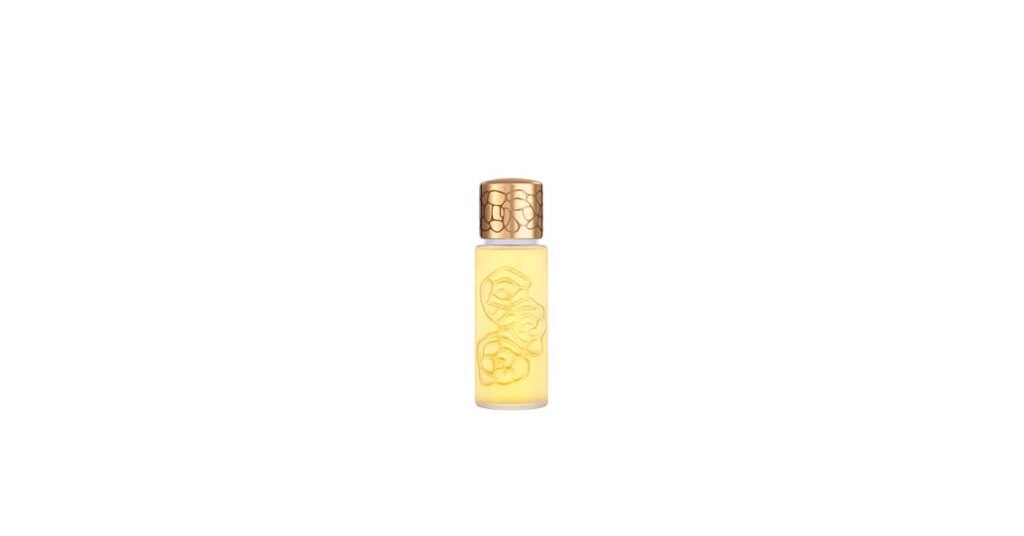
Houbigant’s Quelque Fleurs L’Original may have been created in 1912, but it found renewed appreciation during the floral-loving 1970s. This legendary composition contained over 230 different floral notes—an astonishing feat of perfumery engineering. The result was something greater than the sum of its parts—a symphony of flowers working in perfect harmony.
The name translates to “some flowers,” which might be the understatement of the century given its rich composition. Quelque Fleurs was the olfactory equivalent of walking through the world’s most magnificent garden at peak bloom. Its enduring appeal throughout the 70s proved that excellence doesn’t go out of style—even in an era known for embracing trends and novelty. The composition became a signature for women who understood that true sophistication often lies in embracing timeless beauty rather than chasing the latest trend.
10. Sweet Honesty by Avon (1978)
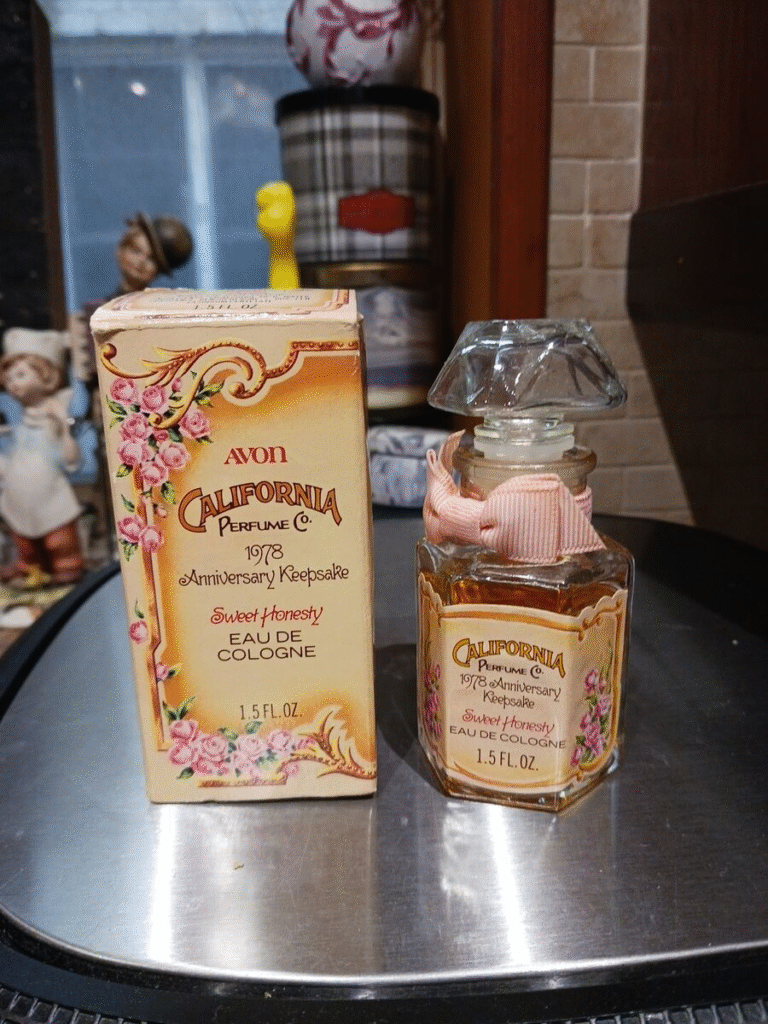
Avon’s Sweet Honesty might as well have been called “First Crush” when it debuted in 1978. This composition captured the essence of teenage innocence perfectly, becoming the gateway aroma for countless young women taking their first steps into the grown-up world of fragrance. Its powdery soft florals with hints of rose, lily of the valley, and jasmine created something undeniably pretty without trying too hard.
Thanks to Avon’s direct-selling approach, Sweet Honesty found its way into suburban homes across America faster than local gossip spreads. The affordable price point made it the perfect birthday gift, and its clean, comforting character made it appropriate for school and family gatherings. This wasn’t a perfume worn to be sophisticated—it was one worn to feel pretty and confident while still being yourself. Avon representatives reported it as their number one seller among teen demographics throughout the late 70s and early 80s.
9. Wild Meadow by Shulton (1975)

Shulton bottled the countryside with Wild Meadow in 1975, releasing it just as environmental consciousness gained momentum. This creation transported wearers from urban settings to sunlit fields without leaving their apartments. Fresh, breezy florals mingled with earthy notes to conjure vast open spaces—pure nature distilled into wearable form. Each application delivered an instant escape when concrete jungles threatened to overwhelm.
Wild Meadow offered a welcome alternative during an era when synthetic compositions dominated many counters. Its uncomplicated charm appealed to those seeking authentic connections to the natural world. The composition arrived precisely when Americans rediscovered environmentalism, making it culturally significant beyond its pleasing aroma. For nature lovers trapped in office buildings and city apartments, Wild Meadow provided temporary mental transportation to simpler settings—a breath of fresh air in bottle form.
8. Ambush by Dana (1972)
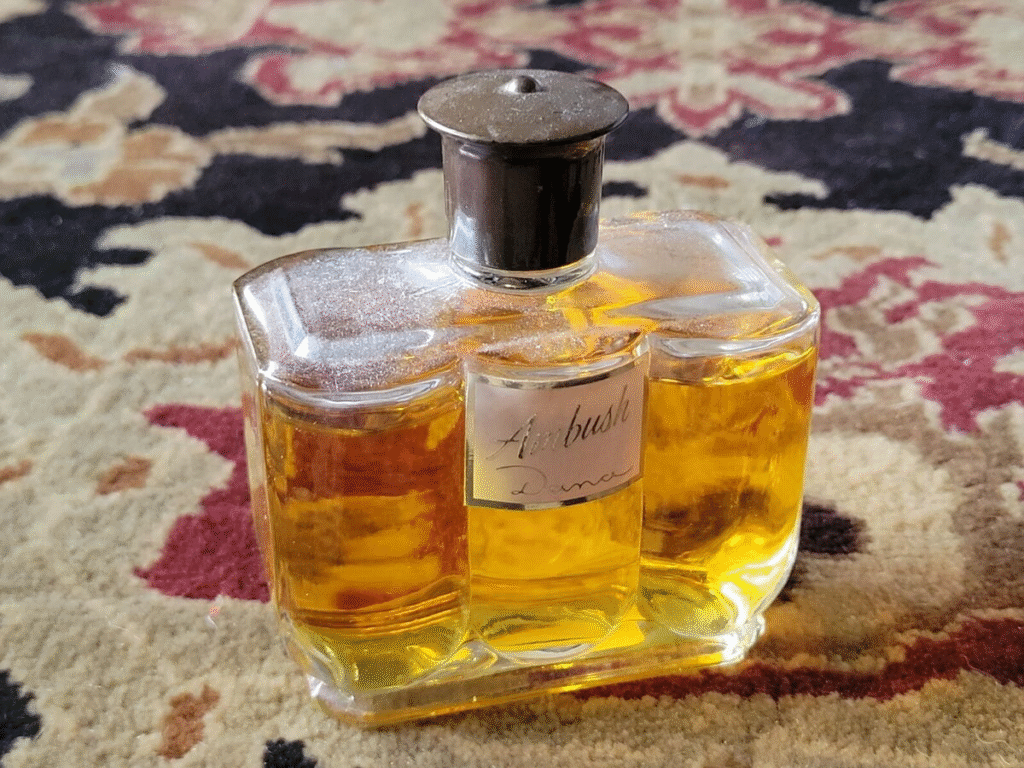
Dana unleashed Ambush in 1972, naming it with all the subtlety of a surprise attack. This affordable mass-market creation packed a punch well above its price point with mysteriously intertwined florals that left an impression more lasting than many bell-bottom fashion trends. It practically dared anyone nearby to ignore it, projecting with remarkable sillage strength despite its budget-friendly pricing.
The composition quickly gained a devoted following among those seeking distinctive aromas without designer price tags. Its unforgettable, lingering character made it perfect for memorable nights out. With its captivating depth and surprisingly complex development, Ambush proved that sometimes the best fragrances aren’t the ones with the fanciest pedigrees. Fragrance historians note that it helped democratize strong, statement-making compositions at a time when many believed only expensive French parfums could deliver such impact.
7. Zen Perfume by Shiseido (1978)
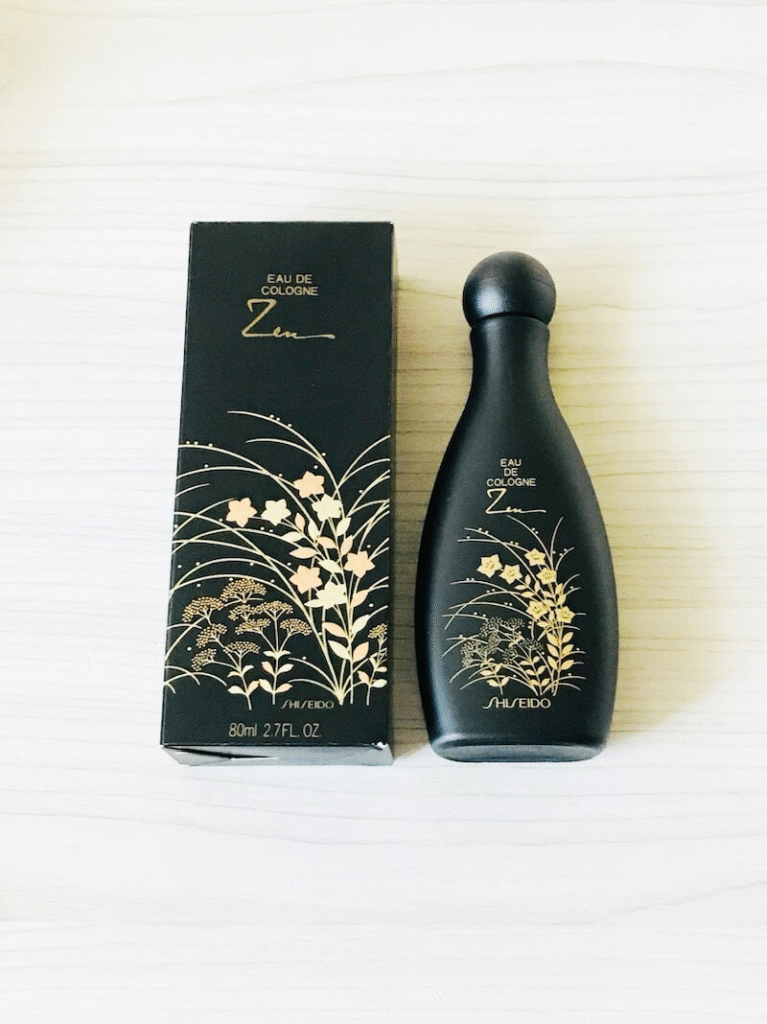
Shiseido’s Zen made its debut in 1978 during the height of America’s love affair with Eastern philosophy and meditation practices. The composition offered warmly balanced oriental notes that created a sense of serene harmony. While other scents of the era shouted for attention, Zen whispered wisdom and balance—a meditative aromatic experience that calmed yet intrigued.
The composition arrived just as yoga and meditation were becoming mainstream pursuits rather than fringe activities. Its sophisticated blend managed to be both calming and subtly energizing. Zen found a devoted following among women who appreciated its quiet confidence and peaceful presence, offering a fragrant retreat from the disco-era chaos of everyday life. Many users reported keeping bottles on their desks at work, applying it during stressful moments to help regain mental equilibrium.
6. Moonwind by Avon (1971)

Avon’s Moonwind landed in 1971 with all the gentle grace its name suggests. Through their army of door-to-door representatives, this softly romantic composition whispered its way into American homes like pleasant secrets being passed between neighbors. Its dreamy floral formula captured something ethereal—the olfactory equivalent of silver light dancing through evening gardens.
Vintage collectors now hunt down original bottles with remarkable determination. Despite its mass-market distribution, Moonwind managed to feel personal and special to each wearer. The composition’s quiet elegance proved that beautiful things don’t need to shout to be noticed. Records show Avon sold over two million bottles within its first year alone, making it one of the company’s most successful launches of the decade.
5. Wind Song by Prince Matchabelli (1973)
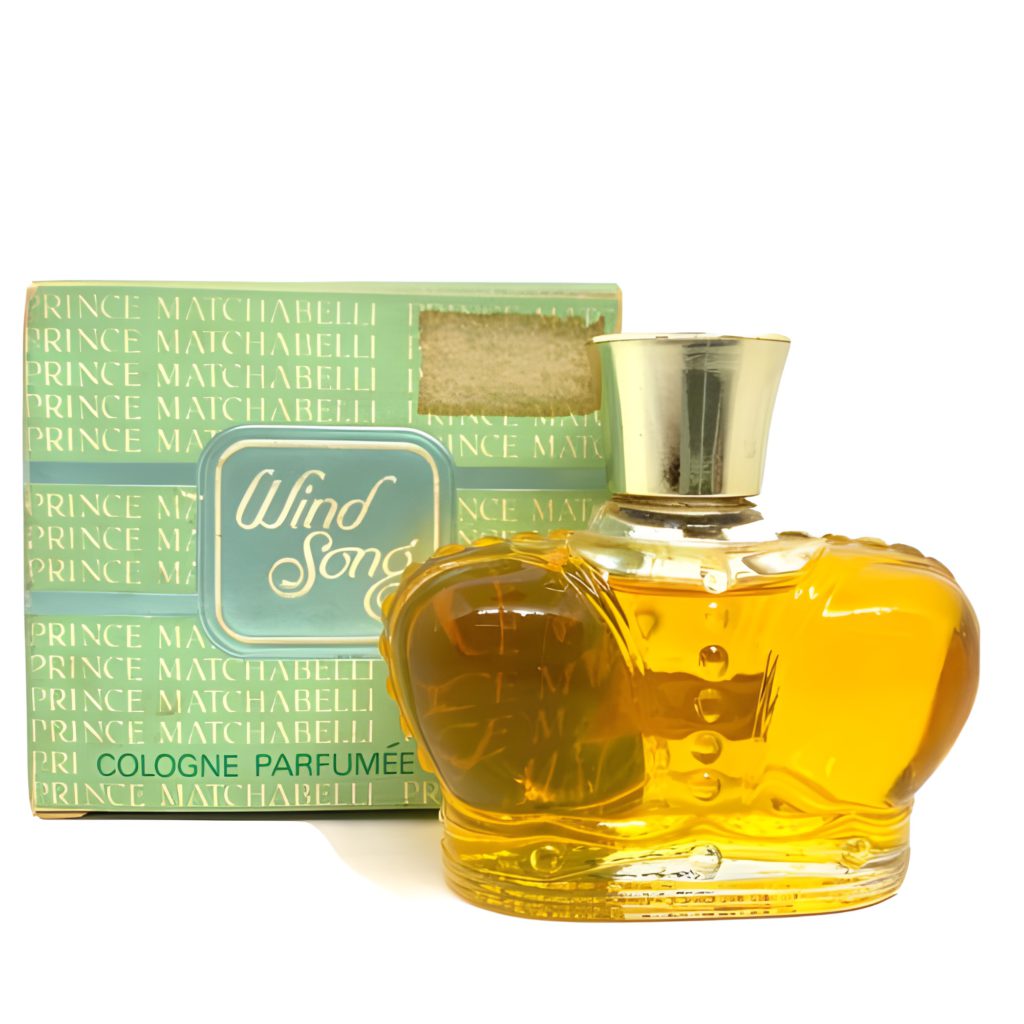
Wind Song floated onto the scene in 1973, bringing with it one of the most ear-worm-inducing advertising jingles ever created. “I can’t seem to forget you, your Wind Song stays on my mind” played so frequently that even people who never wore the composition can still hum it today. The delicate floral bouquet perfectly matched its name—light, airy, and romantically reminiscent of a perfect spring breeze.
Prince Matchabelli created the aroma to be distinctive but not domineering, perfect for daily wear when wanting to smell lovely without commanding all the attention. Its approachable price point made it accessible to almost everyone. Wind Song became the olfactory equivalent of comfort food—reliable, familiar, and always welcome. The ingenious marketing campaign ensured that the name and the jingle became permanently linked in the public consciousness, creating one of the decade’s most recognizable fragrance brands.
4. Aliage by Estee Lauder (1977)
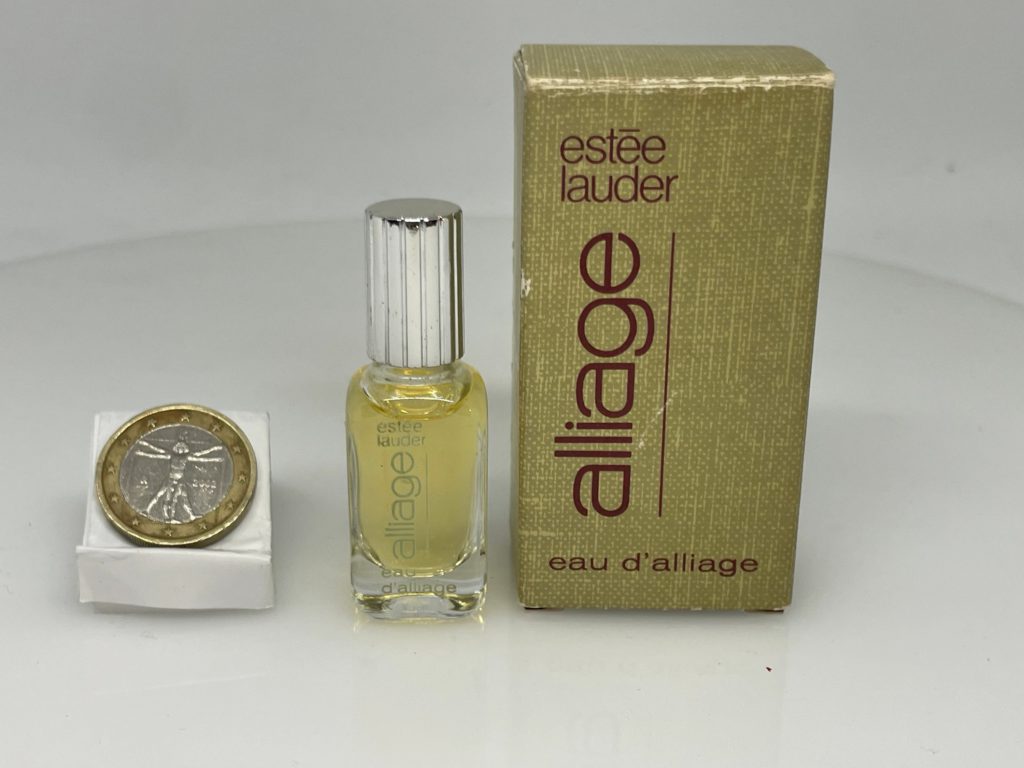
Estee Lauder created a whole new fragrance category when they launched Aliage in 1977—the “sport fragrance.” This was revolutionary in an era when perfumes were still largely divided into “daytime florals” and “evening orientals.” Aliage broke the mold with vibrant green notes, spices, and deep florals that somehow worked perfectly for both active daytime wear and evening social occasions.
The composition represented the era’s athletic, confident femininity. Its fresh yet sophisticated character made it ideal for the emerging woman who might start her day with a morning jog and end it in the boardroom. Aliage perfectly captured the 70s zeitgeist of women claiming spaces previously reserved for men, but doing it entirely on their own terms. Estee Lauder reported that initial sales exceeded projections by nearly 200%, demonstrating that women were eager for fragrances that matched their increasingly active lifestyles.
3. White Shoulders by Evyan (1977)
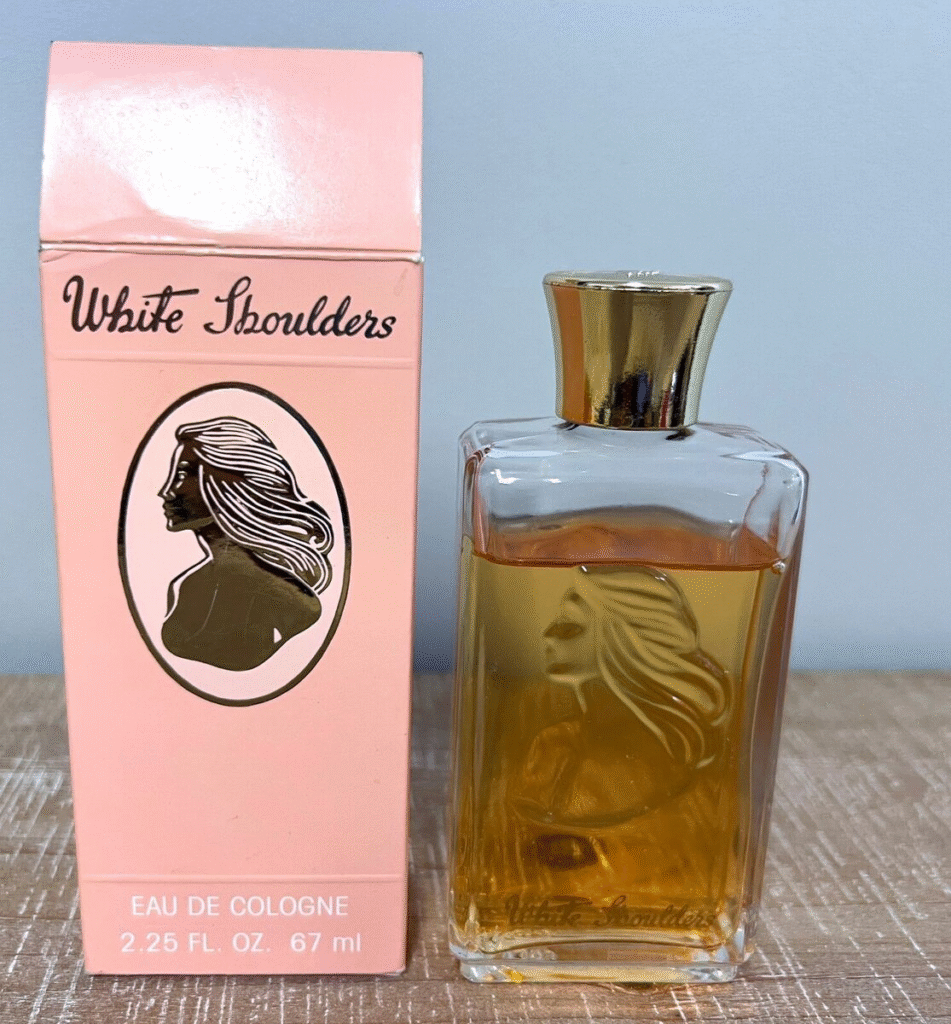
White Shoulders experienced a major revival in 1977, though its origins date back to 1945. The composition was the perfume equivalent of classic elegance—timelessly appropriate and instantly recognizable. Its rich composition of gardenia, jasmine, lily of the valley, and amber created a sophisticated floral bouquet that somehow managed to be both traditional and memorable at once.
The aroma embodied a particular kind of American elegance that felt both aspirational and attainable. While other fragrances of the era were busy breaking rules, White Shoulders celebrated them with its softly powdery warmth and refined character. It became the signature for special occasions—proms, weddings, important dinners—when timelessness mattered more than trends. The distinctive white box with black velvet ribbon became so recognizable that even today, vintage empty packages sell for surprising amounts to collectors.
2. Lauren by Ralph Lauren (1978)
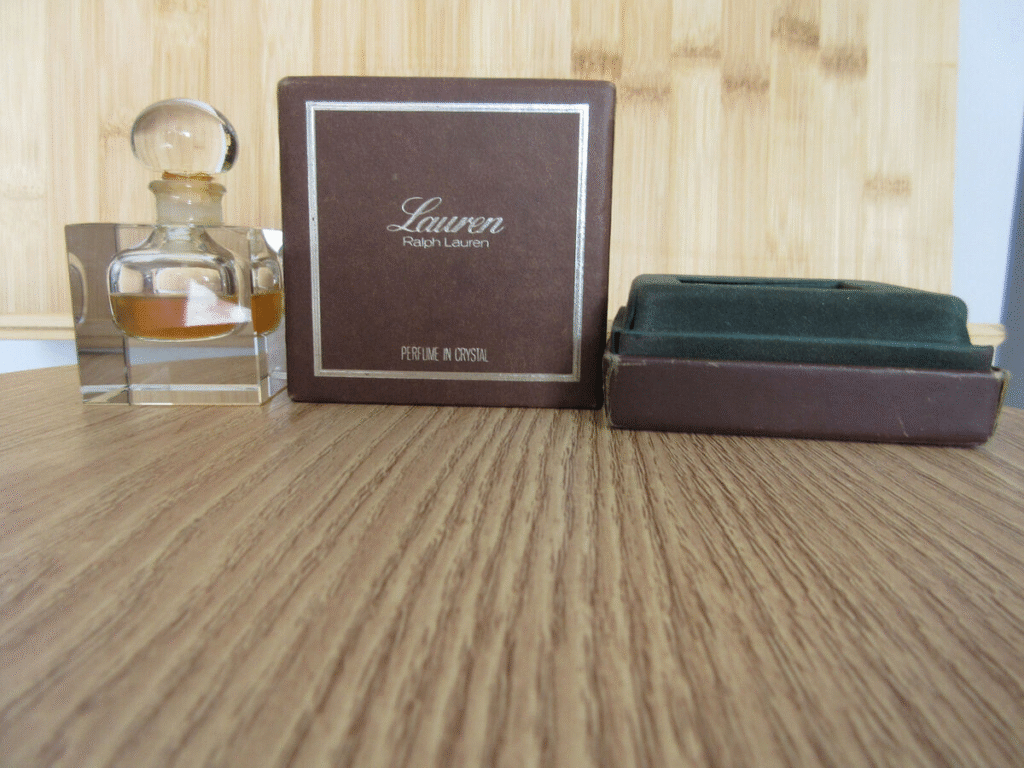
Ralph Lauren launched his first women’s fragrance in 1978, offering the perfume equivalent of his clothing line—preppy, polished, and quintessentially American. Lauren encapsulated effortless sophistication that looked casual but never sloppy. Its sophisticated blend of green notes, rose, carnation, and violet created something appropriate for everything from horseback riding to cocktail parties.
The classic, understated bottle matched the contents inside—refined without being showy. This composition became the olfactory companion to Lauren’s vision of American style, giving women an aroma as versatile as a well-cut blazer. Lauren quickly became the signature for women who valued tradition while still wanting to feel modern. Fashion historians note it as one of the most successful designer brand extensions of the decade, helping establish what would become a multi-billion dollar fragrance licensing industry.
1. Jontue by Revlon (1977)
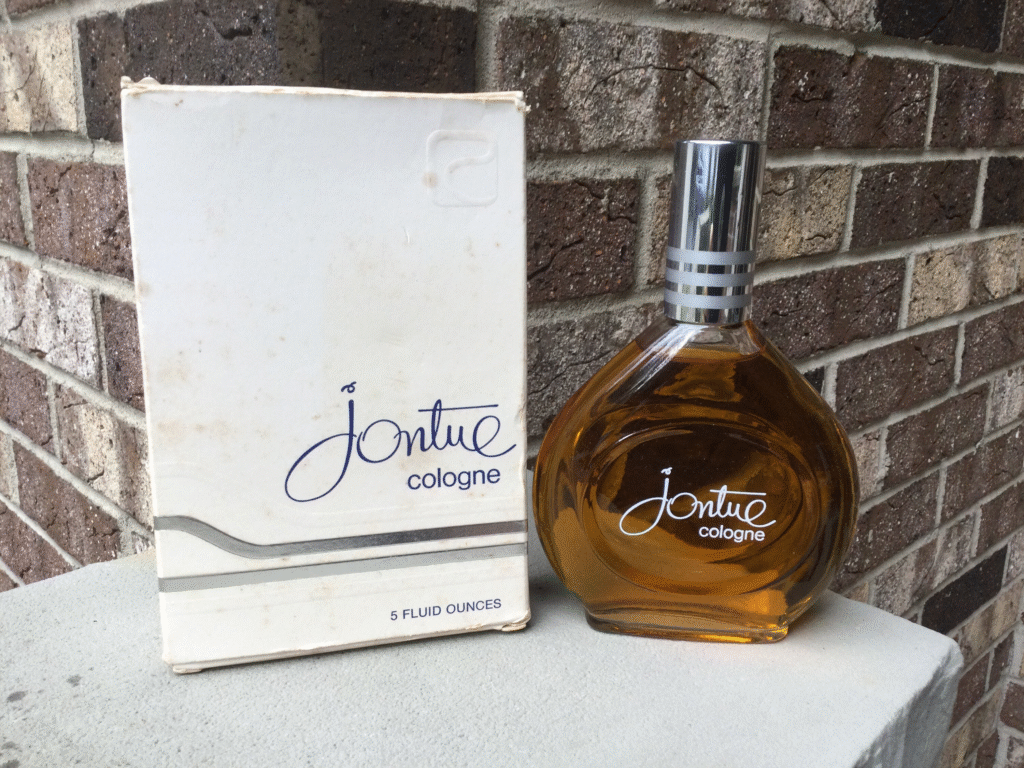
Revlon’s Jontue floated onto the scene in 1977 with advertising featuring models in flowing dresses running through meadows. While Charlie (its rebellious sister from the same brand) was breaking rules, Jontue drafted love letters and pressed flowers between book pages. The softly dreamy floral blend created something tenderly enchanting—appealing to those who preferred whispering sweet nothings over making bold declarations.
This was the fragrance for women who may have embraced liberation but still enjoyed a good romance. Jontue perfectly captured that specific 70s vibe that mixed newfound independence with romantic idealism. Its sweet, approachable character made it a bestseller for Revlon throughout the latter part of the decade. Industry reports showed it achieved top-ten status in department store sales for three consecutive years following its launch.







